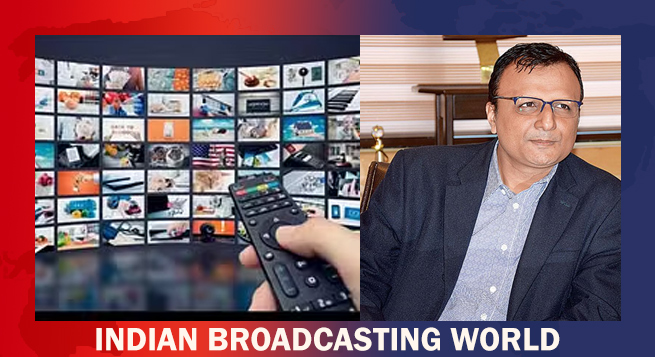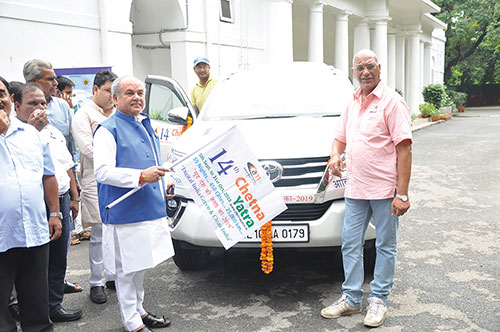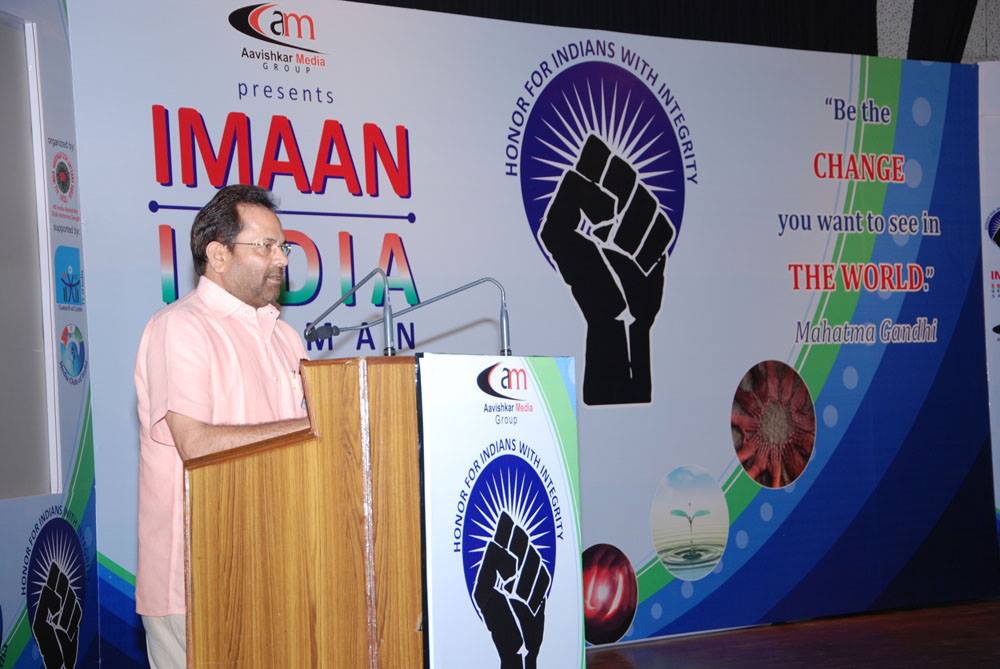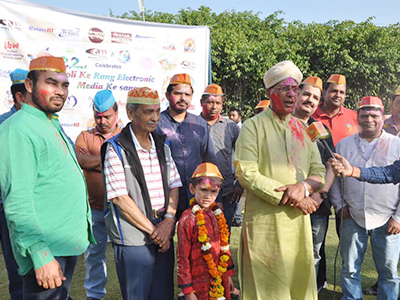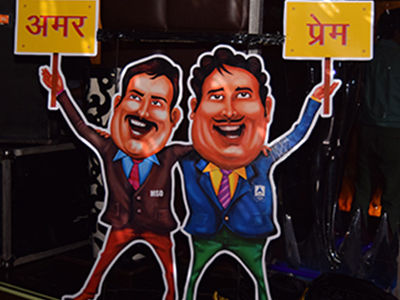2024 was a landmark year for India and its media landscape. Amidst global political turbulence, India, under Prime Minister Narendra Modi’s leadership, emerged as a beacon of political stability, weathering the once-in-a-century pandemic while ensuring continuity in governance. This stability has set the stage for the country’s economic trajectory in 2025 and beyond. It has also influenced the evolving dynamics of the Indian media industry, which stands at the cusp of a transformative inflection point.
Artificial Intelligence in the Spotlight
One of the defining features of 2024 was the mainstreaming of Artificial Intelligence (AI) in public discourse. PM Modi’s use of AI to translate his speeches underscored the technology’s transformative potential. AI is no longer confined to niche applications; it is reshaping industries, including media, where it is poised to disrupt traditional business models. AI-driven tools have started influencing content creation, personalization, and audience analytics, heralding a new era of media innovation.
Challenges and Transformations in Indian Media
At the close of 2024, Indian media witnessed a generational shift in leadership at major houses, coupled with a wave of consolidation. Traditional television platforms grappled with declining subscriptions, while digital media struggled with revenue models heavily reliant on opaque algorithms controlled by Big Tech. As artificial intelligence and digital platforms reshape the landscape, the industry faces an urgent need to adapt and innovate.
2024 also saw nascent efforts by Indian media to take the India story global. NDTV, India Today, and others have been at the forefront of this initiative, with ANI’s collaboration with Sinclair Media Group in the United States serving as a notable example. These efforts aim to showcase the transformational journey of New India on a global stage, leveraging technology and storytelling to reach wider audiences.
The Road Ahead: Opportunities and Challenges in 2025
2025 is poised to be a defining year for Indian media as it navigates the challenges of Big Tech’s influence. These platforms not only control how digital news is consumed and monetized but also pose risks of foreign interference, especially as AI models become exponentially sophisticated. The ability of these technologies to influence democratic processes necessitates immediate action.
To address these challenges, Indian media must push for favorable revenue-sharing agreements with Big Tech while championing indigenous technological solutions. Direct-to-Mobile Broadcasting (D2M) emerges as a key innovation that could level the playing field for Indian news media. By bypassing traditional distribution models, D2M allows broadcasters to reach audiences directly, ensuring greater control over content and monetization.v
A Convergence of Technology and Vision
The convergence of indigenous technological advancements in AI, D2M, and related fields with the aspiration to take the India story global offers immense potential. As the world’s largest democracy and a hub of technological talent, India has the resources and capability to tell its story on its own terms. 2025 holds the promise of creating technology-enabled platforms that reflect India’s unique perspective while competing on the global stage.
Conclusion
As India’s media industry embarks on this critical journey, the fusion of innovation with tradition will be paramount. The challenges posed by AI, Big Tech, and shifting audience behaviors are significant, but they also present opportunities for growth and reinvention. With concerted efforts to harness technology and amplify India’s voice globally, 2025 could mark the beginning of a new chapter for Indian media.
 Govt. not considering rules for use of AI in filmmaking: Murugan
Govt. not considering rules for use of AI in filmmaking: Murugan 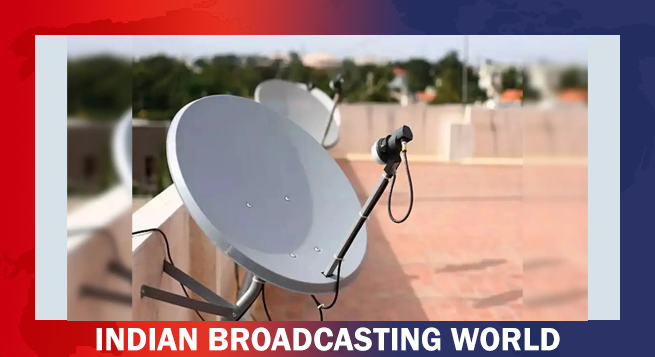 DTH revenue slide to ease to 3–4% this fiscal year: Report
DTH revenue slide to ease to 3–4% this fiscal year: Report  At Agenda Aaj Tak, Aamir, Jaideep Ahlawat dwell on acting, Dharam
At Agenda Aaj Tak, Aamir, Jaideep Ahlawat dwell on acting, Dharam  JioHotstar to invest $444mn over 5 years in South Indian content
JioHotstar to invest $444mn over 5 years in South Indian content 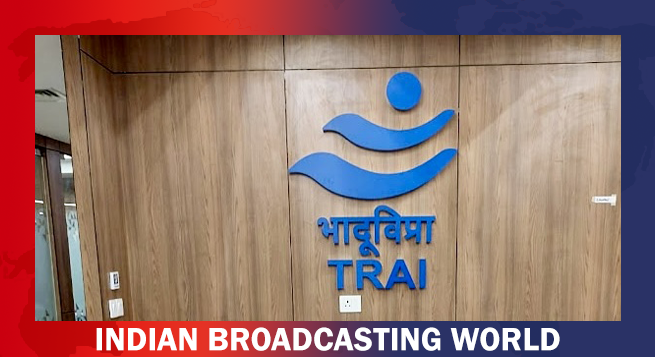 Standing firm, TRAI rejects DoT views on satcom spectrum fee
Standing firm, TRAI rejects DoT views on satcom spectrum fee  Diljit Dosanjh wraps shoot for untitled Imtiaz Ali film
Diljit Dosanjh wraps shoot for untitled Imtiaz Ali film 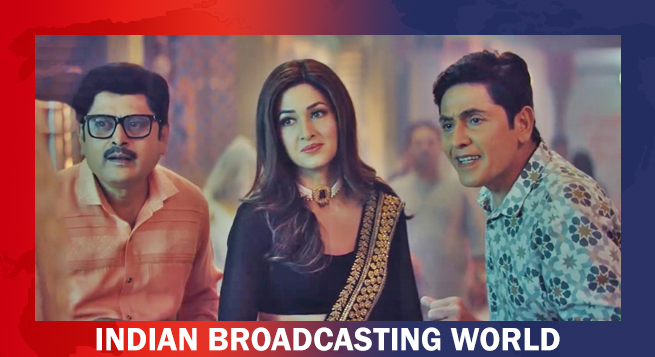 ‘Bhabiji Ghar Par Hai 2.0’ to return with comedy, chaos, a supernatural twist
‘Bhabiji Ghar Par Hai 2.0’ to return with comedy, chaos, a supernatural twist  BBC names Bérangère Michel as new Group CFO
BBC names Bérangère Michel as new Group CFO 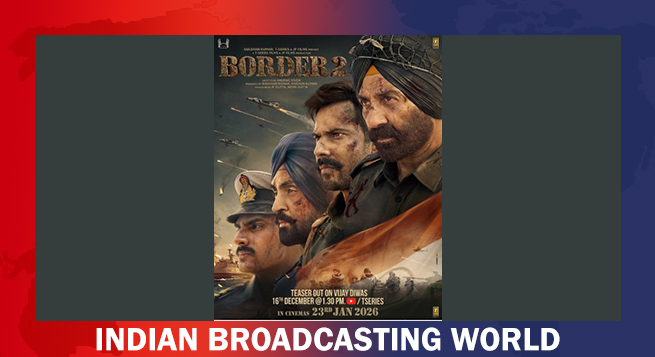 ‘Border 2’ teaser to be unveiled on Vijay Diwas
‘Border 2’ teaser to be unveiled on Vijay Diwas 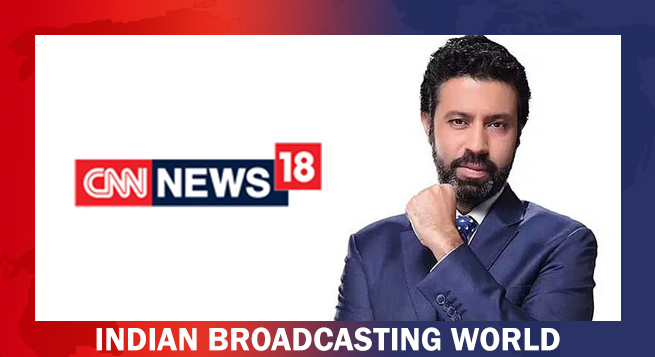 CNN-News18 Rahul Shivshankar takes editorial charge
CNN-News18 Rahul Shivshankar takes editorial charge 



